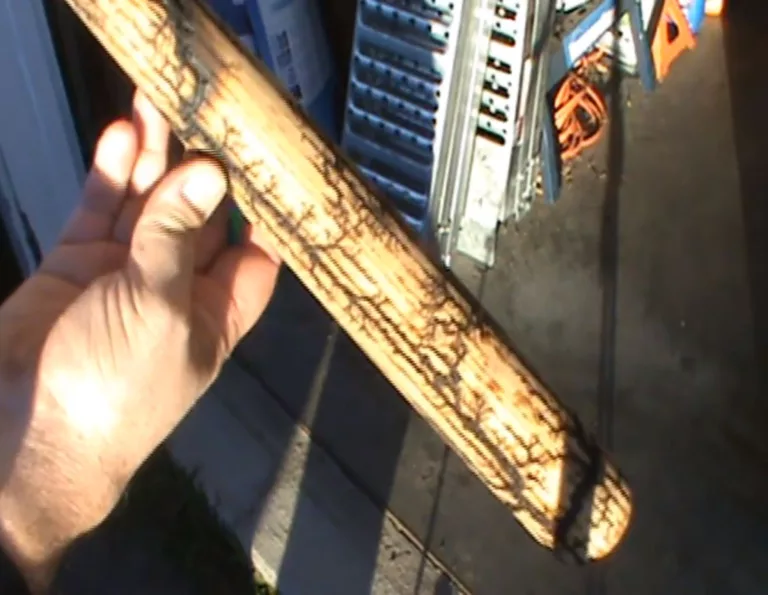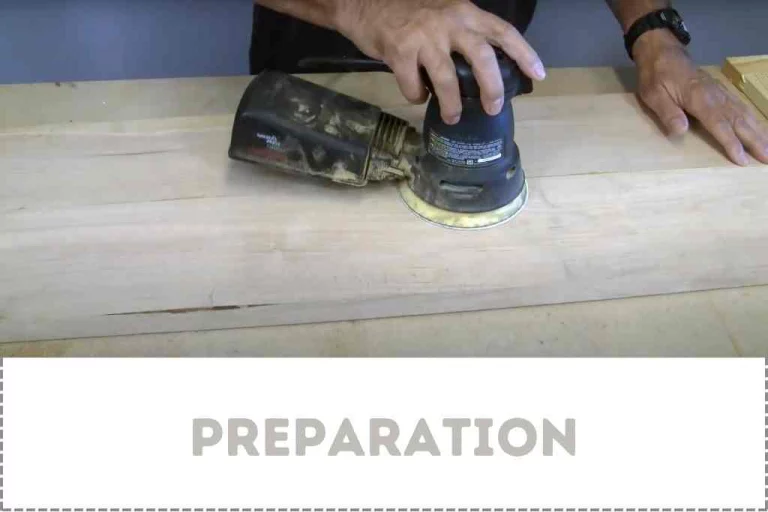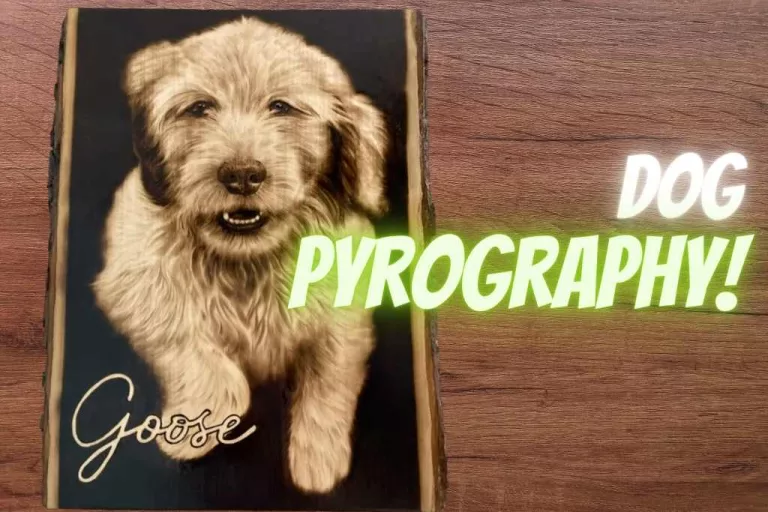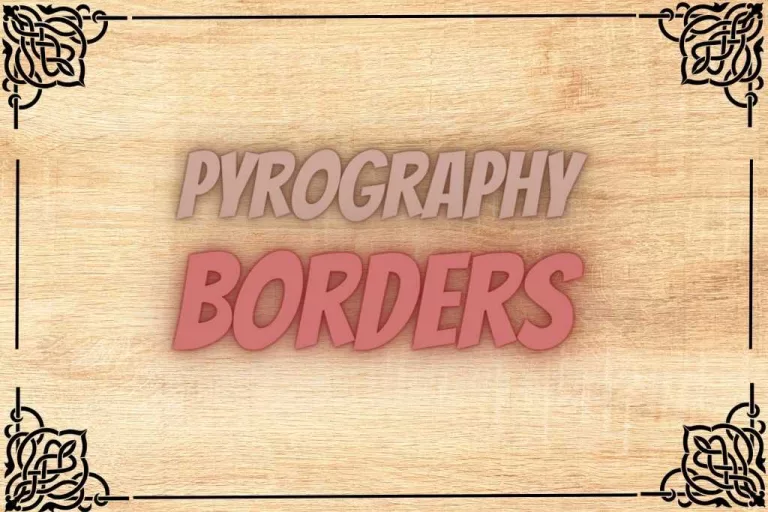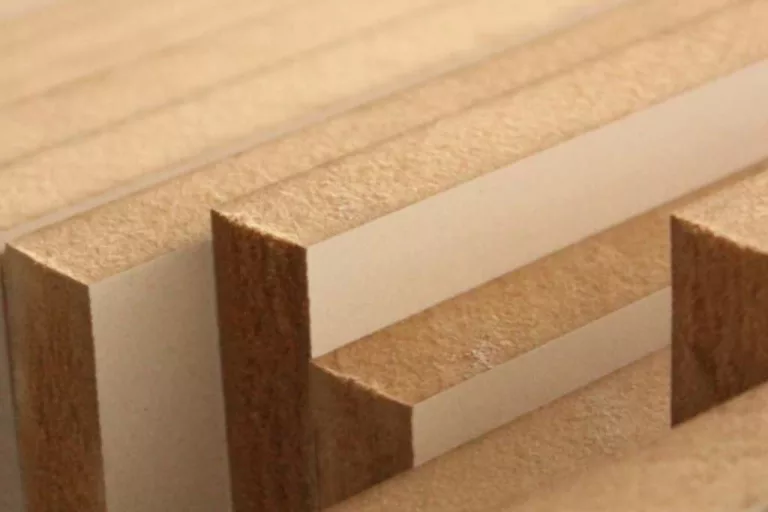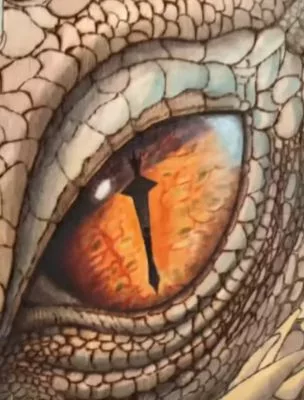Pyrography Temperature Chart – an Aid for a Perfect Burn
Depending on the material type and burning temperature, the burning shade always varies. Following PYROGRAPHY TEMPERATURE CHART will help you understand different burning shades done on a particular material using various temperature settings.
Temperature Range Chart for Different Materials Burning
This table presents a range or an overview of wood burning temperature chart, and temperature ranges of leather pyrography, bone pyrography, felt pyrography, bamboo pyrography.
| Material Type | Wood Burning Temperature Ranges |
| Wood Pyrography | 300 degrees Celsius to 650 degrees Celsius (572 degrees Fahrenheit to 1202 degrees Fahrenheit) |
| Leather Pyrography | 230 degrees Celsius to 500 degrees Celsius ( 446 degrees Fahrenheit to 932 degrees Fahrenheit) |
| Bone Pyrography | 470 degrees Celsius to 1200 degrees Celsius ( 878 degrees Fahrenheit to 2192 degrees Fahrenheit) |
| Felt Pyrography | 160 degrees Celsius to 300 degrees Celsius ( 320 degrees Fahrenheit to 572 degrees Fahrenheit) |
| Bamboo Pyrography | 350 degrees Celsius to 700 degrees Celsius ( 662 degrees Fahrenheit to 1292 degrees Fahrenheit) |
| Paper Pyrography | 232 degrees Celsius ( 450 degrees Fahrenheit) is the flash point of papers having low flash points. So, for pyrography, the burn marks should be at anywhere below from 100 to 200 degrees Celsius, based on paper thickness and moisture content. |
Pyrography Temperature Chart for Wood
As in the picture below, you will have to use the following temperatures to get the shades. But this is totally experimental and subject to the wood you are using.
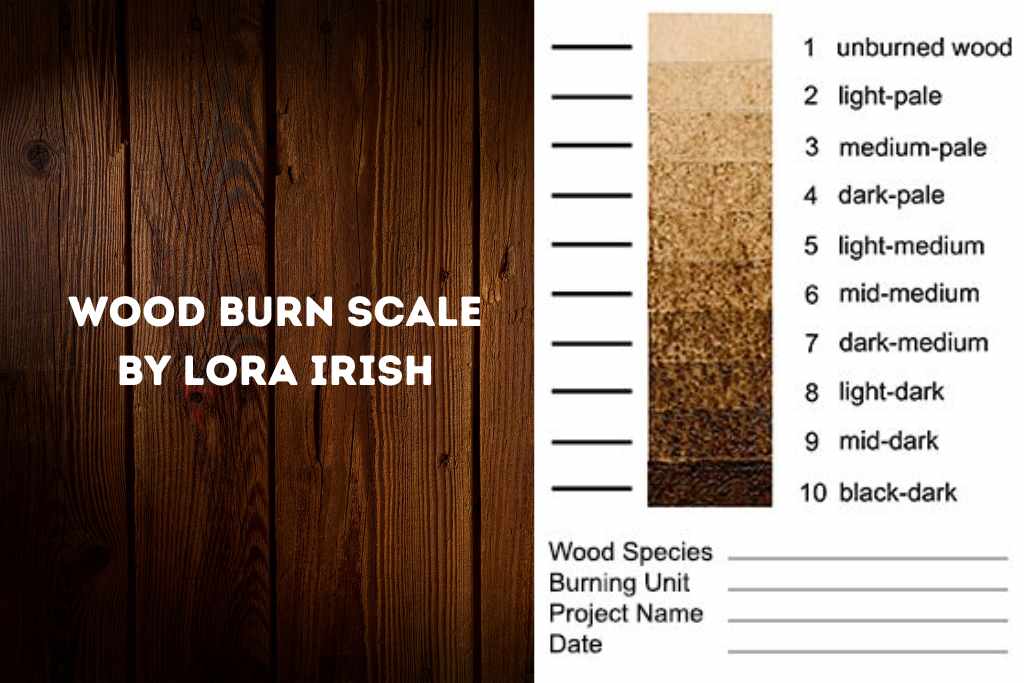
- Unburned Wood (Temperature Level – 0): Let’s start with no temperature. The top part of the chart is just a plain wood surface. Without any heat, you get it as it is.
- Light-Pale (Temperature Level – 3.5): This is one of the lowest temperature settings and is suitable for starting the lightest shading technique.
- Medium-Pale (Temperature Level – 4.0): With this temperature, you will get a slightly deeper pale shade. But it will be a shade darker than before.
- Dark-Pale (Temperature Level – 4.5): Once you turn the temperature to 4.5, you will get the deepest pale shade. This shade is more suitable for highlighting various areas.
- Light-Medium (Temperature Level – 5.0): Turning the temperature to 5 will give you the lightest version of a medium-burning shade.
- Mid-Medium (Temperature Level – 5.5): As you can see from the chart sample above, burning wood at this temperature will give you a suitable shade for starting outlining.
- Dark-Medium (Temperature Level – 6.0): The dark-medium shade is slightly darker but equally effective.
- Light-Dark (Temperature Level – 6.5): The wood turns into a light-dark shade with a higher temperature, such as 6.5.
- Mid-Dark (Temperature Level – 7.0): This shade is preferred for filling wood burning artwork. It also offers one of the darkest shadings.
- Black-Dark (Temperature Level – 7.5): If you want black-dark depth and texture, turning the burner to the highest setting will help you achieve that.
Pyrography Wire Tip Temperature Chart
If your burner tool does not have a temperature control system, it can be very challenging to know how hot the tip is. In that case, the following chart will help you understand the temperature of the pen tip by color.
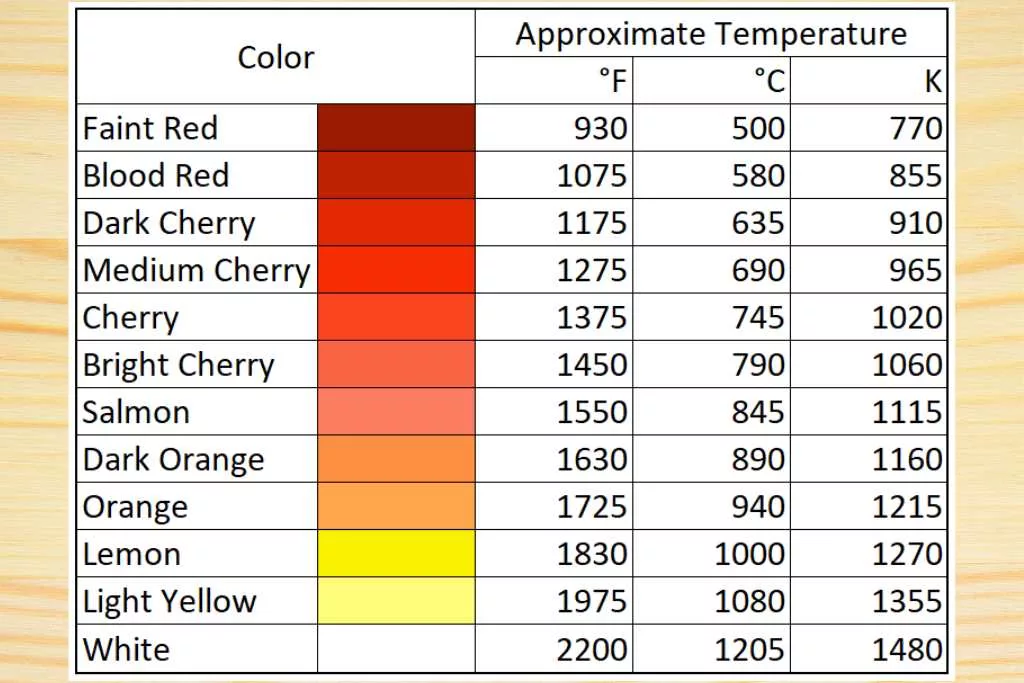
This table is given again below for you to copy and post it on your pyrography desk.
| Tip color | Degree Fahrenheit | Degree Celsius | Kelvin |
| Faint Red | 930 | 500 | 770 |
| Blood Red | 1075 | 580 | 855 |
| Dark Cherry | 1175 | 635 | 910 |
| Medium Cherry | 1275 | 690 | 965 |
| Cherry | 1375 | 745 | 1020 |
| Bright Cherry | 1450 | 790 | 1060 |
| Salmon | 1550 | 845 | 1115 |
| Dark Orange | 1630 | 890 | 1160 |
| Orange | 1725 | 940 | 1215 |
| Lemon | 1830 | 1000 | 1270 |
| Light Yellow | 1975 | 1080 | 1355 |
| White | 2200 | 1205 | 1480 |
Additional read – this particular article discusses on pyrography temperature.
And the this video is a fine one if you like to have a control over the burning temperature.
I’ll never forget the time I was working on a detailed eagle feather piece. I had the temperature dialed in perfectly, but as I worked, I became so engrossed in the details that I didn’t notice the tip had cooled slightly. The resulting shade was lighter than intended, but it added an unexpected layer of texture that made the feather look as if it was caught in a gentle breeze – a serendipitous mistake that taught me the beauty of imperfection in art.
EndNote
You should know that I have used this temperature chart to give you the primary idea about how the shades usually appear at different temperatures. But the shades can appear slightly lighter or darker when you try them on different types of wood, such as pinewood, birch wood, or basswood.
Related Article
FAQs
What materials can you do pyrography on?
You can use leather, wood, paper, gourds, bone, bark, nuts, and ivory to do pyrography on.
What is the best temperature for burning wood?
The best temperature for burning wood efficiently is typically between 570°F (300°C) and 660°F (350°C). At this temperature range, wood burns most completely, producing the maximum amount of heat and the least amount of smoke and particulate emissions.
Wood smolders when it burns at a low temperature and without a sufficient supply of oxygen. This typically occurs at temperatures below 570°F (300°C).
However, it’s essential to note that the ideal burning temperature can vary depending on the type of wood and the moisture content. Dry, seasoned wood burns more efficiently and at a higher temperature than green or wet wood. Additionally, different types of wood stoves and fireplaces may have specific requirements or optimal operating temperatures.

